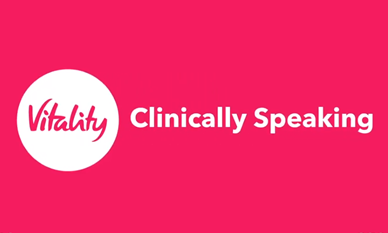What's the latest in cancer screening?
Published: 01/11/2019
Cancer caused some 9.6 million deaths around the world in 2018, according to the latest factsheet from the World Health Organisation (WHO)1. Sadly, a lot of these deaths could probably have been prevented had the symptoms been spotted earlier. “Many cancers have a high chance of cure if diagnosed early and treated adequately,” the WHO said in the same document.
Yet despite big advances in life-saving cancer screening techniques, a growing number of Britons fail to take advantage of their NHS screening appointments. Cervical cancer mortality rates, for example, have plunged by up to 70% since the NHS screening programme was introduced in 1988. However, take up of cervical screening has fallen over the last 10 years and was at a 19-year low in 2017, according to a report by Public Health England2.
NHS cancer screening
The NHS currently offers screening programmes for bowel, breast and cervical cancer. These programmes are targeted at those considered most at risk. Breast cancer screening, for example, is generally offered to women aged between 50 and 70, while bowel cancer screening is routinely offered to men and women aged between 60 and 74 (or 50 and 74 in Scotland).In England, another type of bowel screening called Bowel Scope, which can detect abnormal changes before they become cancerous, is also starting to be offered to people at age 55. And screening for other cancers may become available as new testing techniques emerge.
“At the moment, there isn’t enough evidence to say that screening for any type of cancer other than breast, bowel, and cervical cancer would be a good idea,” the NHS said on its website. “But researchers are always looking for new tests, and there are some types of cancer where research into screening is growing, for example, lung and ovarian cancers.”
Better screening technology
Screening techniques under trial at the moment include biomarker bodily fluid tests that can signal the onset of various cancers, and CT scans that can detect lung cancer in older or ex- smokers.Genetic and genomic screening is also a popular area of research that has yielded a number of advances, including a genetic test that looks for breast and ovarian cancer indicators in the BRCA1 and BRCA2 genes.
At the sharpest end of the cancer-screening field, researchers are also working on a blood test that looks for fragments of so-called circulating tumour DNA (ctDNA). Discovered inadvertently during trials of a blood test designed to detect genetic abnormalities in unborn babies, ctDNA is sloughed off by cancer cells and could allow doctors to detect multiple types of cancer via a simple blood test and before symptoms appear.
The insurer’s role
Screening technology is not the only weapon we can use to battle cancer. According to the WHO, around a third of deaths from cancer are caused by five behavioural risks1.These are:
· High body mass index
· Low fruit and vegetable intake
· Lack of physical activity
· Tobacco use
· Alcohol use
The WHO1 said: “Between 30–50% of cancers can currently be prevented by avoiding risk factors and implementing existing evidence-based prevention strategies.”
So, insurers can play a part in the fight against cancer by encouraging members to make healthy lifestyle changes such as improving their diet, or doing more exercise.
By offering access to the latest screening techniques, they can also give people a better chance of surviving any cancer they have or are likely to develop.
Such benefits used to be the preserve of high-level executives. But that is changing. VitalityHealth, for example, recently began offering discounts on targeted cancer screenings designed to evaluate an individual’s risk of breast, cervical and bowel cancer as standard.
“Twenty years ago, screening programmes were only for senior executives in large companies,” said Stuart Scullion, Executive Chairman of The Association of Medical Insurers and Intermediaries.
“Today, insurers offer health screening programmes that can form a cost-effective part of managing your health and are available to everyone.”
30/08/19 This article’s view is based on the law, practices and conditions as at the day of publication. While we have made every effort to ensure they are accurate, we accept no responsibility for our interpretation or any future changes. | VH O 0131
Sources:
1 https://www.who.int/news-room/fact-sheets/detail/cancer
2 https://www.gov.uk/government/publications/health-matters-making-cervical-screening-more-accessible/health-matters-making-cervical-screening-more-accessible–2
Where to next?
-
Insights Hub
Our Insights Hub brings you our range of adviser content - from video series to articles & blogs.

